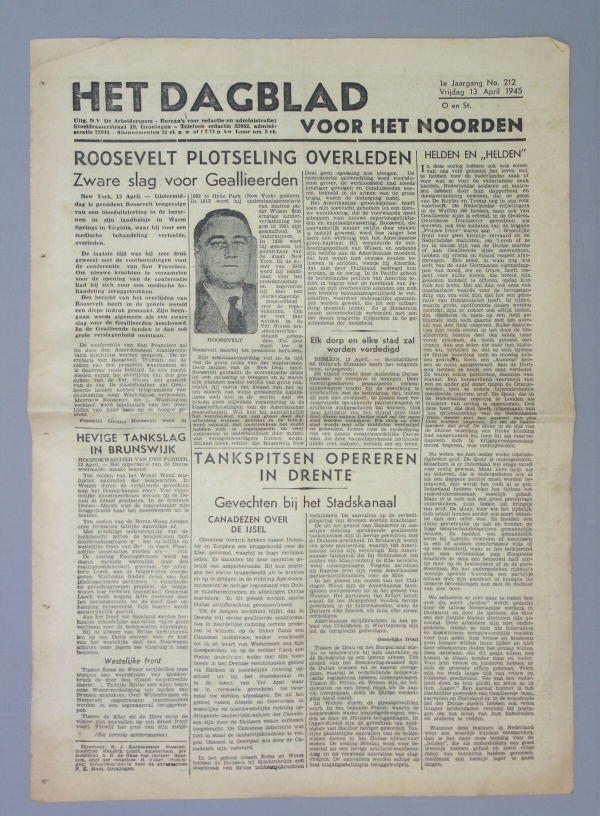While the southern part of the Netherlands was liberated in the autumn of 1944, the rest of the country passed through a period of severe austerity in the ensuing winter. The ‘Hongerwinter’ of 1944-1945 would for long remain prominent in the memory of the Dutch people. Relief only came in late April 1945, when Operation Chowhound and Operation Manna included airdrops of food supplies over the western parts of the Netherlands. The 'Zweeds wittebrood' ('Swedish white bread') became a symbol of liberation for a generation of Dutch people.
Textile confiscation
Between October and December 1944, the German occupying forces demanded clothing and textiles from the Dutch citizens for the support of the German troops. Since this went against international war regulations, the Dutch government from London instructed the remaining Dutch authorities not to cooperate.
The Germans then tried to pressure the citizens to "voluntarily" hand over goods. They threatened to punish them, or forbade people to walk outside when searches for textiles were carried out, so that textiles could not be hidden. Resistance newspapers warned against this "textile robbery" and advised people to hide their clothes and textiles.
Looting
The German occupiers plundered systematically, for example Jewish property, but at the end of the war, individual soldiers also stole goods. The damask napkin in the exhibition (TRC 2011.0122), with the crowned letter W representing Queen Wilhelmina, was stolen from Paleis ‘t Loo by a German soldier. Later the napkin was "liberated" by a Dutch family.
National Aid Action Red Cross (H.A.R.K.)
The liberation of the Netherlands started in September 1944 in Limburg. In the following months, parts of the provinces of Limburg, Noord-Brabant and Gelderland were liberated. It soon became apparent how destitute the Dutch population had become. There was a great need for household textiles in particular, but there was also a shortage of clothing: many people only had the clothes they were wearing at the time. The Allies brought in relief supplies - for the most part clothing, textiles and shoes - from the USA, the UK and Canada to alleviate the first needs.
An efficient and effective distribution of the foreign goods was necessary. Because of the international fame of the Red Cross, the name Nationale Hulp Actie Roode Kruis (‘National Aid Action Red Cross’) was chosen, although the aid campaign was not officially part of the Red Cross. In January 1945 the H.A.R.K. was established, with the task of alleviating the material needs of the war victims.
The H.A.R.K. was active until 1947. Most of the H.A.R.K. goods came from the USA, some 11½ million units. In total, the H.A.R.K. distributed nearly 18 million goods, both new and used, among war victims in the Netherlands.


